Wakatū Hotel
Street AddressWakatū Hotel
Cnr Collingwood & Bridge Sts.
From: 03/04/2023 - Ongoing
Installation Type: passive
Wakatū Hotel
Cnr Collingwood & Bridge Sts.
The Wakatū Hotel has a big place in Nelson’s memory, as one of the first major hotels on the main thoroughfare into the city, and more recently, as one of the last large-scale watering holes.
Now, the land has been returned to the original customary owners of the Nelson Tenths – Wakatū Incorporation – who are working through exciting long-term plans for the location.
Since its original construction, the Wakatū Hotel has a long history of upgrades, refurbishments, and transformations across two sites. The original hotel was on the corner of Bridge and Trafalgar streets, proving very popular from 1845 to 1877. The current site, on the corner of Bridge and Collingwood, was built in 1866 as H.V. Phillips’ Beehive Stores, before being licensed as the Wakatū Hotel in 1900, quickly adding an extension along Collingwood Street in 1902.
When Cobb & Co opened in 1960, it became a firm favourite for families (especially for kids as their first restaurant experience).
The Wakatū Hotel is known for its prized position and wrap-around veranda. Most Nelsonians have visited its bar and restaurant, from Friday night drinks to the daily regulars (including Ralph, who cleaned the windows in exchange for jug of beer), from local celebrations to passing travellers, from a meeting place to a temporary home for fishing crews and seasonal workers.
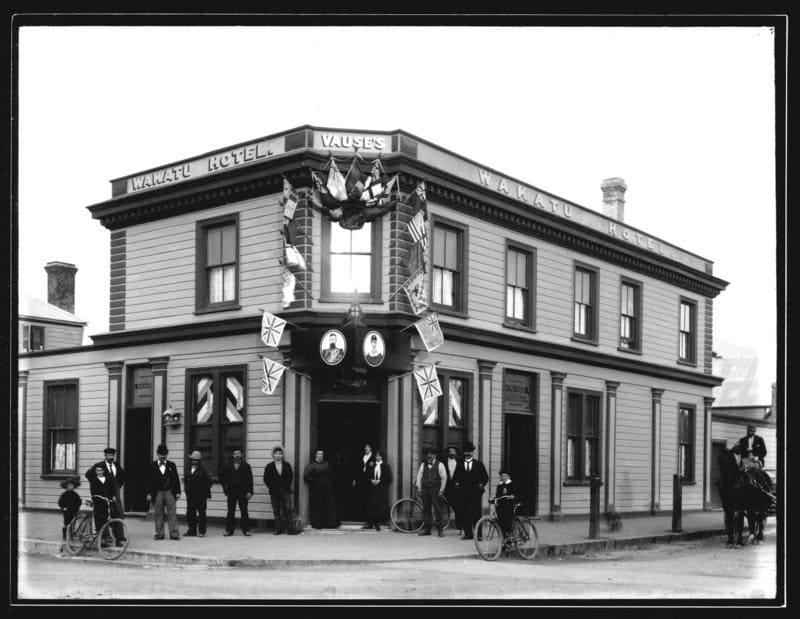
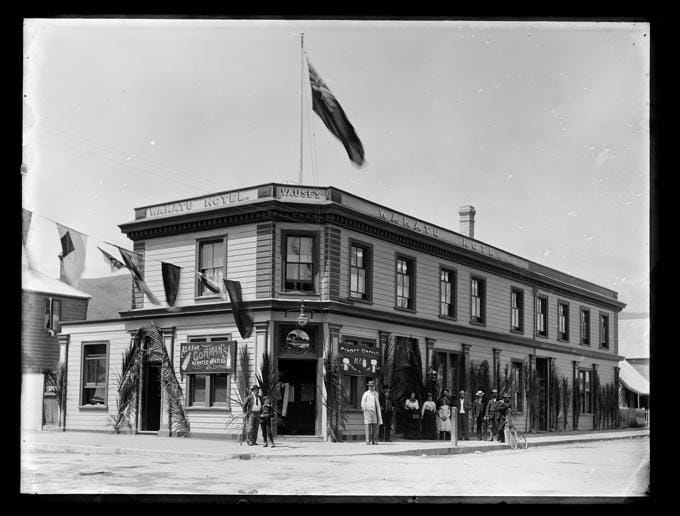
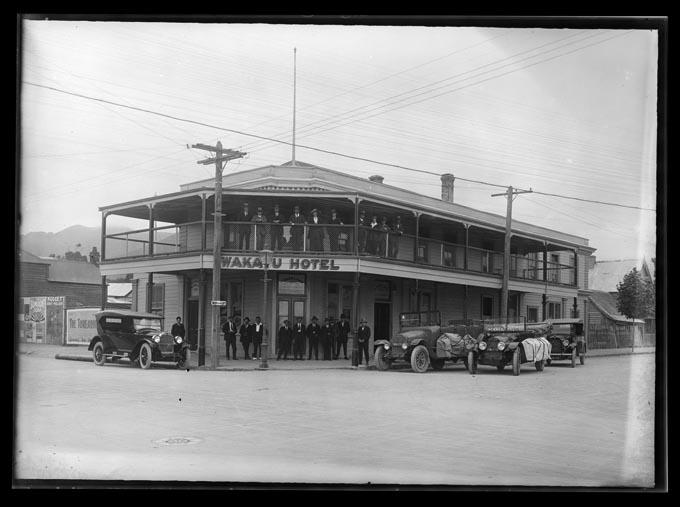
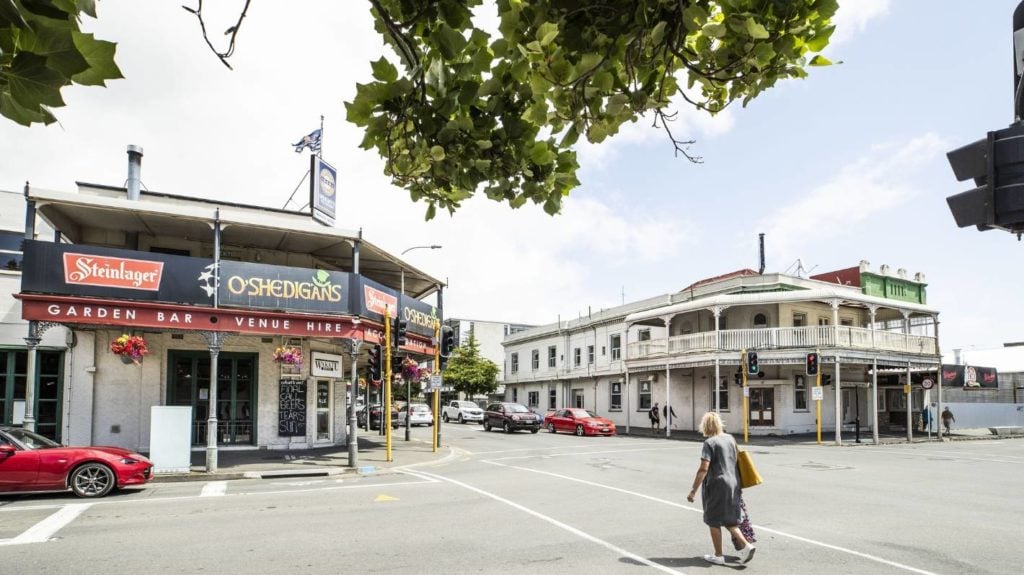
The Nelson Tenths and Wakatū Incorporation
In London during the early 1840s, the New Zealand Company (NZC) planned for the settlement of a town called Nelson. NZC intended to purchase some 200,000 acres of land from Māori, which it would divide into one thousand lots and sell to intending settlers.
The NZC agreement between mana whenua and the NZC included conditions that one-tenth of land purchased for European settlement in the Nelson, Motueka and Golden Bay regions would be set aside exclusively for the benefit of Māori owners. Mana whenua would also retain their traditional occupation lands, urupā (burial lands) and wāhi tapu (sites of cultural significance) separate to the Nelson settlement.
Despite this agreement between Māori and NZC, the full one-tenth of land was never reserved, nor were Māori occupation lands, urupā and wāhi tapu sites protected.
Forty-seven acres were taken for the remodelling of Nelson town in 1847, 429 acres were taken in 1853 for an Anglican school at Motueka, 85 acres were lost to public works, streets, and roads, and 1,145 acres were sold by the Māori Trustee when a 1967 Act allowed lessees to freehold land. This left fewer than 2,000 acres of the 15,100 acres of Tenths Reserves agreed to by the New Zealand Company in Māori ownership.
New Zealand governments in the 1880s and 1890s enacted legislation allowing lessees rights of perpetual renewal and 21-year rent reviews.
Until 1897 Government-appointed administrators used income from the Tenths in whatever manner they believed to “benefit” the owners. There was no consultation with the Māori owners.
After many years of protest and debate lead by the Māori owners, legislation was exacted enabling Māori incorporation’s or trusts to be formed to administer their own reserves. Wakatū Incorporation was established by order in Council in 1977 by the descendants of the original owners of the Tenths Reserves. At that time, the Crown handed back control of approximately 1,393.72 hectares of land. This was the remnants of the Tenths Reserves and occupation sites. But, generations of oppressive legislation meant the return on assets was minimal.
Wakatū Incorporation was determined to bring about change. Together with other organisations and individuals, they lobbied against the unfair lease regime. New legislation enacted in 1998 allowed Māori to finally set market rents for their own land.
Wakatū Incorporation’s purpose is to preserve and enhance our taonga for the benefit of current and future generations. Based in Whakatū (Nelson), Aotearoa/New Zealand, Wakatū has approximately 4,000 owners, who descend from the customary Māori landowners, the whānau and hapū of the Whakatū, Motueka and Mōhua rohe.
About the artwork
In late 2022, Wakatū Incorporation approached Make/Shift for advice on how best to present the building while they finalised their long-term plans for the site. Make/Shift recommended removing all the advertising and brand signs and cladding the building’s windows and facades in the same material as is used in the Nelson City Centre Artwalk. This is lightweight, durable, and colourfast, making for the perfect large-scale showcase for an artwork.
Wakatū commissioned local artist Zara Alen (Ngāti Porou) to create Te-Putahi-nui-o-Rehua – a bold and bright stylised design.
Not only does the artwork have a massive impact, but the transformation reveals the true form of the building, rather than the previous clutter of signage.
Make/Shift would like to acknowledge Nelson City Council for their support, and Nelson Speedy Signs for their ongoing support in these projects.
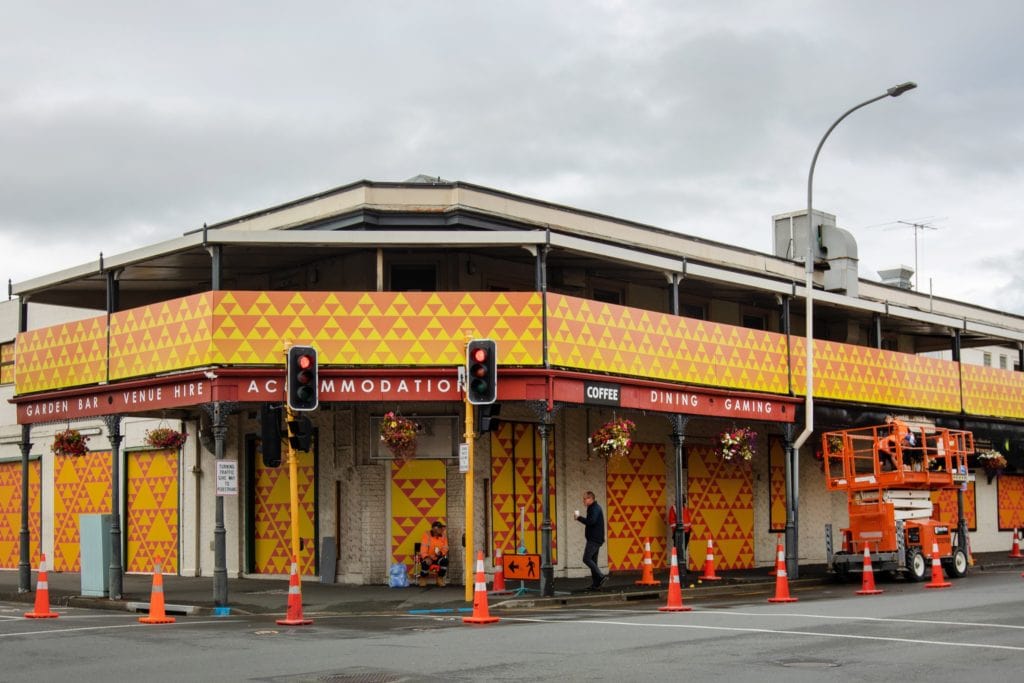
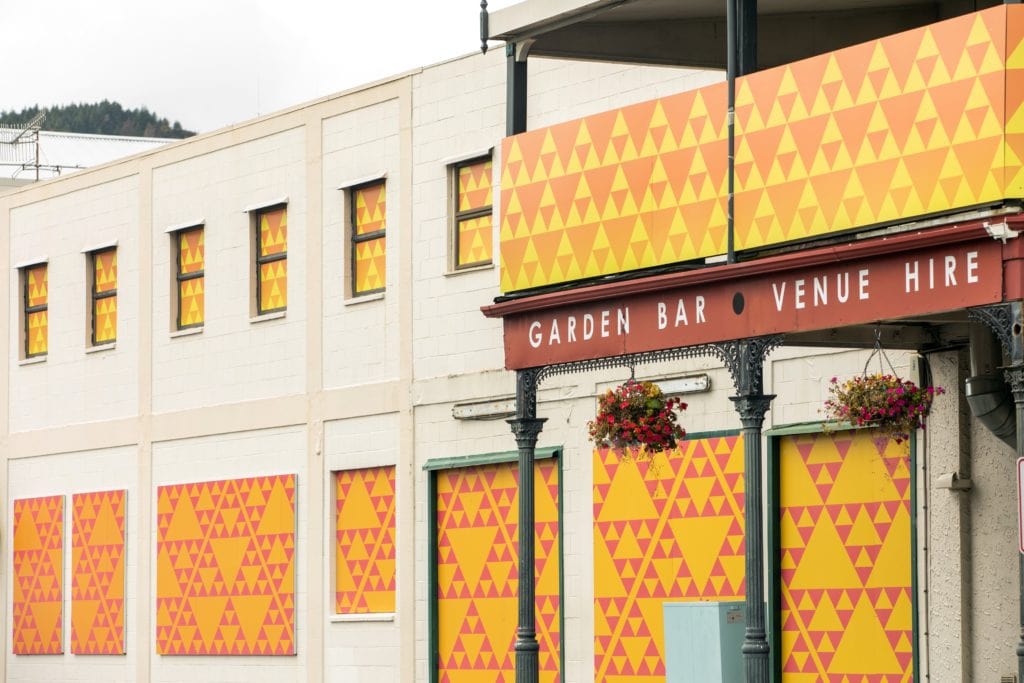
Te-Putahi-nui-o-Rehua
Rehua, whom resides at the gates of the divinely guarded realm in the heavens above, awaits upon the calls of prayer invoked by the souls of those seeking his guidance and blessings. Kites of scripture ascend into the heavens in hope of his mercy to rain upon them, awakening their spirit, bringing life into them once more, to be cured.
The piece is about the daily intentions we serve and how that impacts our overall hauora. It is a reminder that we hold the power within to heal and prosper and to live life full of abundance. There’s always a listening ear to our thoughts and prayers and this piece is a depiction of that process.
The niho taniwha used in Zara’s work is to show the interconnection of all things, the transmission and communication between cells and energy and the realm of mythology.
About the Artist
Zara Alen (Ngāti Porou) is a multidimensional artist living in Motueka, Aotearoa. You will find her artworks in many forms such as fine art paintings, graphic design, and murals. Her collection of artworks is inspired by the natural environment through a Māori world view. The use of kowhaiwhai and Māori symbolism is to acknowledge whakapapa and to depict her interpretation of ancestral knowledge.
When Zara was a young child, she was privileged enough to travel around Aotearoa in her family’s house bus. They travelled to various sites and locations where she started to build her relationship with the natural environment around her.
“Since a child, art and my creative experiences have always been a spiritual practice I use to express my inner most feelings. It’s a place I can go to, to relax and transcend into a meditative state to get my thoughts and visions out and on to canvas. I can never truly explain in words how beautiful and mesmerising everything around me looks and feels, so I started sharing those feelings through my art.”
A sense of belonging and connection was realised by stepping into her truth as a Māori artist. That knowing empowered Zara to pursue her passion to create an intentional purpose with her art, not only to benefit herself and her whānau but to the collective.